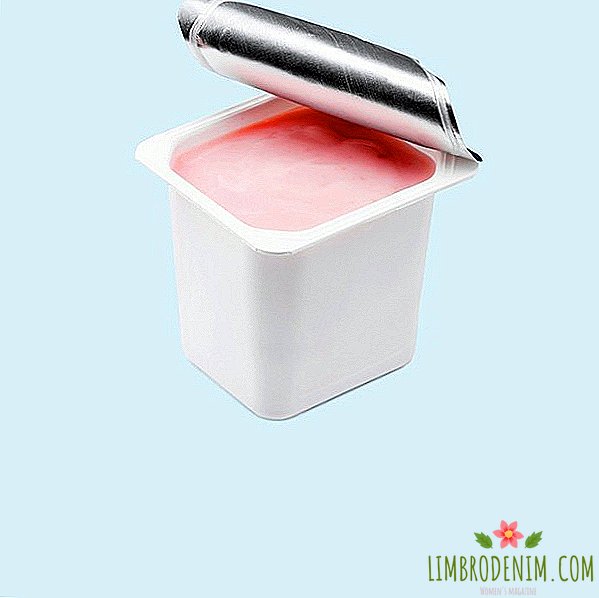Should I be afraid to sunbathe
Tanning talk increasingly - in circumvention of beauty issues - directly concerns health issues. A bundle of "sun - cancer" is fixed in our minds at all levels: from social advertising to well-known Mark Jacobs T-shirts with a clear indication of "Protect the skin you're in". Even in the definition itself, in the first lines there is a warning “prolonged exposure to the sun adversely affects the state of health (nervous, cardiovascular and other systems) and provokes the formation of melanoma.” Therefore, the latest research on the benefits of the sun are perceived in about the same way as tips from advertising tobacco companies of the 50s of the last century, when a cigarette was recommended as a remedy for cough or headache. Summer is “already today” and it’s better to get a firm position in relation to solar baths right now.

If we talk about aesthetics, tanning was accompanied by a complicated story. Egyptian beauties were soaked for hours in a prehistoric spa, because pallor was one of the main signs of femininity. At the same time, macho of all time had to sunbathe intensively to look on the papyrus or the picture of the Renaissance era quite courageously. Prosperous Greek women and Roman women avoided sunbathing and did not miss the opportunity to emphasize their social superiority due to the milky shade of their skin. The Middle Ages and New Time did not change anything radically - the body untouched by the sun was still the marker of the privileged class. Another thing - the questions of medicine. The sun was used as a therapeutic agent throughout the whole history of mankind, whether it wore loincloths or synthetic bikinis: solar gardens flourished in Babylon and Egypt, solariums were built in Greece and Rome, Hippocrates and Herodotus tirelessly advertised the healing effects of rays, the ancient Germans tanned painful children and old people, in the Middle Ages, the Jews and Arabs did not shun the sun. The development of medicine in the eighteenth and nineteenth centuries, when physiotherapists and naturopaths began to treat virtually all diseases with sunbathing, to a certain extent popularized tanning. However, due to the fact that the adherents of the movement have become nudists, liberal youth and other elements that do not cause sympathy among the conservative majority, the effectiveness of the method is still in doubt.
Evidence-based medicine at the beginning of the 20th century seemed to reinforce the positive image of the sun — the link between tanning and producing all the necessary vitamin D and good mood hormones became apparent. Then came the 80s, and with them AIDS, the problems of thinning the ozone layer and "harmful UV radiation," environmental and man-made disasters. All this has become a source of social neurosis and many phobias. Studies that have linked the melanoma (skin cancer) with sun exposure, immediately recorded a tan in the worst enemies. But even then, not everyone turned away from him. If a lot of people do not avoid things that cause more obvious harm to health (for example, cigarettes), then relations with a tan can develop on the basis of hedonic risks - despite the warnings of doctors, many continue to lie for hours under the open sun.

Between the camps, immoderately tanned and intensely pale in mixed feelings, the doubting majority froze.

Choosing a strategy for behavior in the sun is also a form of aesthetic manifesto. So on the Cote d'Azur in 1922, despite public opinion, Gabrielle Chanel announced her firm decision to wear a tan, as he brings with her the spirit of an active, healthy and self-confident woman. In opposition, there were heroines in the spirit of Marlene Dietrich, who prefer a more aristocratic and "sublime" image, excluding the absurdities in the form of burns and whitish traces of a bathing suit. A similar confrontation takes place today. Dita Von Teese and Nicole Kidman are hiding under an awning, smeared with zinc, - they act as emphatically sleek and refined divas with leather tinged with porcelain. On the sunny side of the beach are Cameron Diaz and Jennifer Aniston, drenched with tanning oil, full of vital energy and ready to jump onto the surfboard at any second. And while the 55-year-old Madonna tells us that she never happens in the sun, because it kills the skin, in the press there are pictures of a 77-year-old taut Sophia Loren, sunbathing topless.
Between the two camps — an excessively tanned and pointedly pale — a more or less rationally doubtful majority froze in mixed feelings. These are the people who are frightened by the opportunity to get sick with “something bad”, but who still do not like the look of their pale legs. And this is what they should know.
In 2012, a dermatologist from Glasgow Richard Weller gave a presentation on how the sun can strengthen the cardiovascular system. It is known that in Australia, death from heart attacks and other myocardial diseases is three times lower than in Britain. Contrary to the strong confidence of the Australians that this is all due to surfing and a cheerful mood, Weller suggests a direct link between the amount of sunlight and heart benefits. His long-term study showed that under the influence of UV light, nitric oxide supplies blood from the skin, which in turn expands blood vessels, improves blood flow, lowers blood pressure and reduces the risk of heart disease. And the older the patient, the brighter the effect. At the same time, Weller proved that in the case of treatment of myocardial diseases, vitamin D itself does not affect the improvement of the state, but is only an indicator of the absorption of sunlight by the body. “Yes, as a dermatologist, I often diagnose my patients with melanoma and advise to avoid the sun, but it’s important to convey to people the fact that sunlight can be both useful and dangerous. Sunlight is a major risk factor for skin cancer, but mortality from heart diseases are a hundred times higher than skin cancer. Optimal conditions must be found in order to use the sun to increase your health, "explains Weller.

A study published this year by the authoritative medical journal, Journal of Internal Medicine, has shown that among women who avoid sunlight, the mortality rate is twice as high as that of those who expose UV radiation. For 20 years, scientists from the Karolinska Institute of Stockholm have observed 29,518 women, who told in detail about their lifestyle, including exposure to the sun and tanning beds, bad habits and weight changes. During all this time, 2,545 observables died, including the number of women refusing sunbathing, twice the number of those who chose a tan. According to the initiator and leader of the study, Pelle Lindquist, in the absence of the sun, the health risk is primarily represented by a lack of vitamin D, which helps the body to withstand the emergence of various diseases, including cancer. This study was a kind of revolution, because it goes against the recommendations of most European experts who advise to minimize exposure to the sun.
So, one of the leading Scandinavian dermatologists Maria Huttunen in a recent interview with the newspaper Helsingin Sanomat urges everyone to avoid the sun. Huttunen notes that despite the positive effect of radiation - it, for example, relieves inflammation on the skin, treats atopy and psoriasis - you should always be alert with it. The doctor reminds that people with sensitive skin may have one of the varieties of “sun eczema”. Prudent is to be those who take antibiotics, painkillers and psychotropic substances - a toxic reaction to them can weaken the protective functions of the body before exposure to ultraviolet radiation. Huttunen sees the main risk of sunburn in sunburns, which damage skin cells, which can later cause melanoma. It is also important to remember that creams with a high sun protection factor block the production of vitamin D, so their regular use requires an additional portion of it. In general, how often it goes, keeping the golden mean is the best tactic, and this rule also works with regard to tanning. Those who choose radical positions should especially carefully monitor the reactions of their body.
Photo: Stella McCartney, Eres




